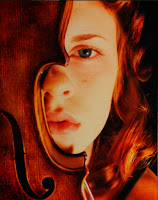1. The changes that they made on the model on the computer were her eyes; they made them kind of wider. They made her lips bigger, enlarged her face a little, switched her hair around.
2. I really don't think it's ethically acceptable to change a person's appearance like that because everyone is beautiful the way they are already. I mean, they picked her to model because they liked the way she looked already, her appearance attracted their eyes, so there shouldn't be a need to change her..right?
3. I believe that there are circumstances in which it would be more ethically wrong to do this type of manipulation, such as maybe when someone's trying to look for a person and it might be like an emergency situation, but this person has a slightly different appearance, and they won't be able to identify them because the person looks different.
4. Well it was OK to move her hair around for that "swish" effect and that's pretty much the only good thing. The other things just changed her natural appearance, even though it was just a little bit. Her eyes, lips, neck, head. It's a different face.
5. I think that the difference between fashion photography and photojournalism is that in fashion photography, they don't just change up a little flaw, it's like the whole thing, or they change it to where it doesn't look the same anymore. It's like they're looking for the "perfect-model-type" face/appearance. And in photojournalism, it's still originality, just fixed up a little, as in the background, or angles.
6. Photojournalism is related to reality in the sense that it grasps in photos what is taking place all around us. In fashion photography, it relates to reality in the sense that it shows how we view beauty and how people think reality should actually be. This affects the ethical practice of each by the way that they have to be careful of whether what they are changing will completely change their intention of their photo and if it's an actual picture.










